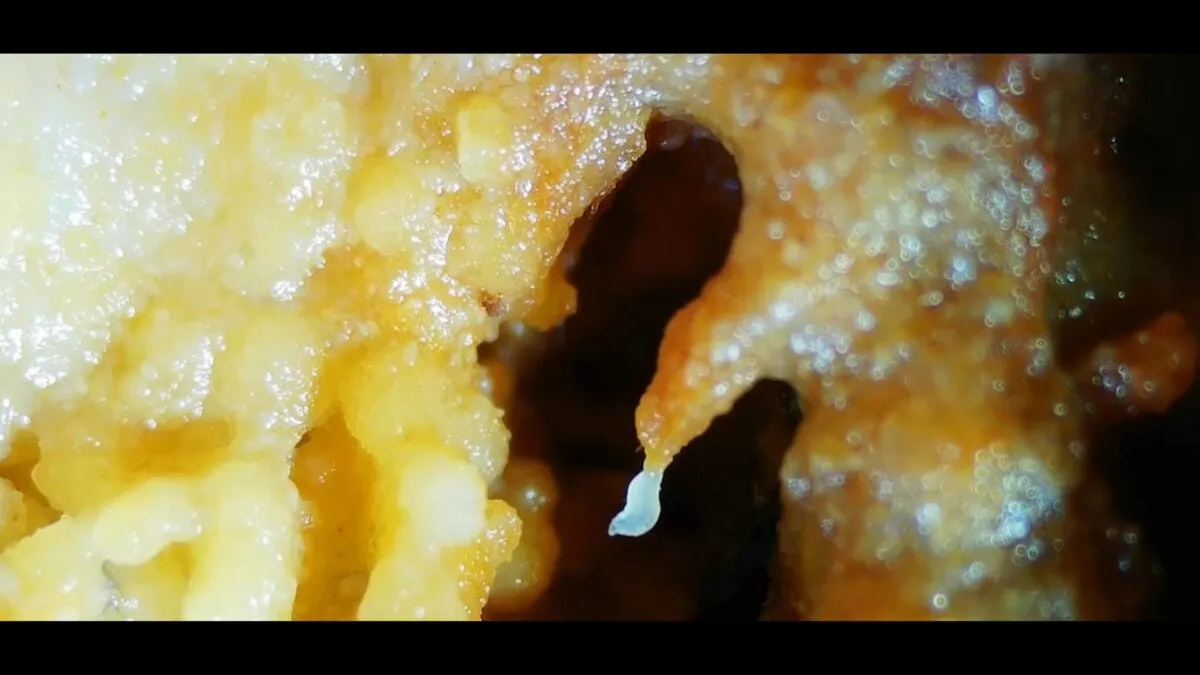
In a groundbreaking study published in Current Biology on Thursday, scientists in Germany have revealed a fascinating yet unsettling behavior of wild nematodes, commonly known as roundworms. These microscopic creatures have been observed forming towering structures made of writhing worms, a phenomenon previously only documented in laboratory settings. This discovery not only sheds light on the lives of these intriguing organisms but also raises intriguing questions about their behavior in natural environments.
The research team, led by senior author Serena Ding from the Max Planck Institute of Animal Behavior, successfully videotaped various species of nematodes engaging in this unusual behavior in the wild. The towers, which consist of nematodes climbing atop one another, serve a crucial purpose: they allow these worms to attach to passing animals or objects that can transport them to new locations. Despite the towers being somewhat of an open secret among worm researchers, this is the first time such behavior has been documented in natural habitats.
Over the past four years, Ding's team dedicated themselves to observing nematodes in their natural environments, focusing on high-density populations. After several months of searching, co-author Ryan Greenway and his colleagues discovered these living worm towers in decaying fruits scattered across orchards near the University of Konstanz. The researchers not only observed the worms in their natural habitat but also brought some back to the lab for further analysis, including experiments with the commonly studied Caenorhabditis elegans species.
One of the most significant outcomes of this research is the confirmation that these worm towers are not merely a laboratory curiosity; they serve a genuine purpose in the nematodes' life cycle. "Yes, they do exist," Ding stated. "But we also confirmed that the towers can facilitate the dispersal of individuals." This behavior had long been theorized, but empirical evidence was lacking until now. Researchers observed the worms using these towers to latch onto passing fruit flies and navigate gaps that would otherwise be unreachable.
The study also indicated that these nematode towers function as temporary "superorganisms," similar to the behavior seen in slime molds and certain ant species. However, Ding and her team were surprised to find that the lab worms did not exhibit specialized roles within the towers. All worms displayed an equal level of mobility, with no evident hierarchy determining which worm would lead the tower.
Despite these revelations, many questions remain regarding the social dynamics among nematodes in the wild. Ding emphasized the need for further investigation into who gets to disperse within these towers and whether the worms are cooperating or competing. Current lab research has shown that C. elegans can build these towers throughout their lives, yet in the wild, the towers observed were composed solely of dauer worms, a larval stage that some nematodes adopt to endure harsher conditions. This discrepancy prompts further exploration into why this behavior appears more prevalent during specific life stages.
Ding's ongoing research aims to bridge the gap between laboratory studies and real-world observations of nematodes. Her goal is to understand not only how these behaviors are generated but also their ecological and evolutionary significance. "I want to study well-known organisms from a natural perspective," she noted. "This study demonstrates the potential for valuable insights without relying on genetically modified organisms." As her team continues to explore the mysteries of nematode behavior, they hope to inspire other researchers to consider the ecological context of their studies.
For those intrigued by the world of nematodes, this discovery adds another layer of complexity to our understanding of these tiny yet remarkable creatures. And for trivia enthusiasts, it's a fascinating topic sure to spark conversation at your next gathering!